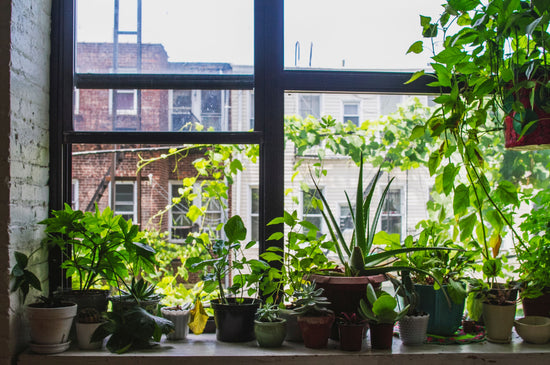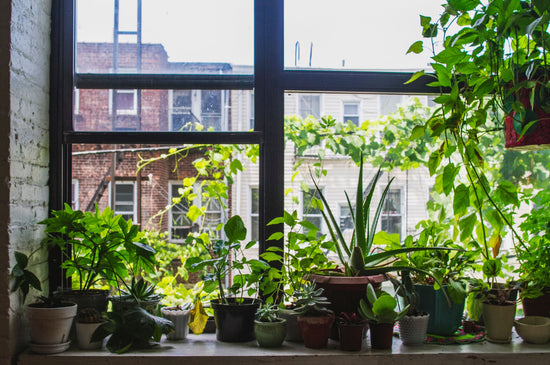Winter Survival Guide: Keeping Your Houseplants Happy During the Cold Months
Winter brings unique challenges for houseplants. As temperatures drop and daylight hours shrink, it’s crucial to adjust your care routine to keep your indoor greenery thriving. Whether you’re a seasoned plant parent or new to indoor gardening, this guide provides essential tips to ensure your houseplants flourish throughout the colder months.
Understanding Winter’s Impact on Houseplants
Winter affects houseplants in three primary ways:
- Reduced Sunlight: Shorter days and weaker sunlight can slow growth and affect photosynthesis.
- Dry Air: Heating systems reduce indoor humidity, which can stress tropical plants like philodendrons and peace lilies.
- Temperature Fluctuations: Cold drafts and hot air from heaters can cause stress and damage sensitive plants.
Knowing these challenges is the first step in crafting a winter care routine that meets your plants’ needs.
Adjusting Light Exposure
Winter light is weaker and less consistent, but there are ways to maximize your houseplants’ exposure.
- Relocate for Optimal Light: Move plants closer to windows that receive the most sunlight. A south-facing window is ideal for light-loving plants like the Lifesaver Plant and Huernia Cactus.
- Supplement with Grow Lights: If natural light is insufficient, consider grow lights. These are particularly useful for succulents, such as the zebra-striped succulent or star-shaped flower cactus, which need bright light to thrive.
Perfecting Your Watering Routine
Overwatering is one of the most common mistakes during winter. Plants require less water when they’re not actively growing.
- Check Soil Moisture: Test the top inch of soil before watering. If it’s dry, water sparingly.
- Use Room-Temperature Water: Cold water can shock roots, especially in sensitive plants like the zamioculcas plant and spider plant chlorophytum comosum.
- Reduce Frequency: Many plants, such as pothos and devil’s ivy, enter a dormant phase and only need occasional watering.
Boosting Humidity
Indoor heating drastically reduces humidity, which can leave plants dehydrated.
- Group Plants Together: This creates a microclimate with higher humidity.
- Use a Humidifier: A humidifier near your plants is an effective way to maintain moisture levels.
- Pebble Trays: Place a tray of water with pebbles under your plants to increase humidity for tropical species like philodendrons and zz plants.
Regulating Temperature
Extreme temperature fluctuations can harm your plants.
- Avoid Drafts: Keep plants away from cold windows, doors, and heating vents.
- Maintain Consistency: Most houseplants prefer temperatures between 65–75°F.
- Use Insulation: For plants near windows, consider using thermal curtains or insulating the glass to prevent cold drafts.
Pruning and Cleaning
Winter is a great time for light pruning and cleaning your plants to remove debris and promote healthy growth.
- Prune Dead Leaves: Remove yellowing or dead leaves to focus energy on healthy growth.
- Dust Leaves: Gently wipe leaves with a damp cloth to enhance photosynthesis, especially for large-leafed plants like peace lilies.
Fertilizer and Repotting
Plants grow slowly during winter and don’t require much feeding or repotting.
- Hold Off on Fertilizer: Most houseplants don’t need fertilizer until spring. Over-fertilizing can lead to salt buildup in the soil.
- Wait to Repot: Repotting is best done during active growth seasons like spring and summer.
Winter-Proof Plants
For those new to houseplants or looking for low-maintenance options, these species thrive in winter conditions:
- Snake Plant: Hardy and tolerant of low light and humidity.
- ZZ Plant: Nearly indestructible and perfect for busy lifestyles.
- Pothos: Adaptable to various light and humidity levels.
- Spider Plant: Great for low-humidity environments.
- Christmas Cactus: A winter bloomer that brightens your home during the holidays.
FAQ: Winter Houseplant Care
How often should I water my houseplants during winter?
Most plants require less water in winter. Check the soil and water only when the top inch is dry.
What’s the best way to increase humidity for my plants?
Use a humidifier, group plants together, or place trays of water near your plants.
Can I fertilize my plants in winter?
It’s best to avoid fertilizing during winter as plants are dormant. Resume feeding in spring.
Why are my plant leaves turning yellow in winter?
Yellow leaves may result from overwatering, low humidity, or inadequate light. Adjust care routines as needed.
Should I repot my plants during winter?
Wait until spring to repot, as plants are not actively growing during winter.
By following these expert tips, you can ensure your houseplants stay lush and vibrant all winter long. Explore our curated collection of winter-ready houseplants and care tools at Wekiva Foliage.





